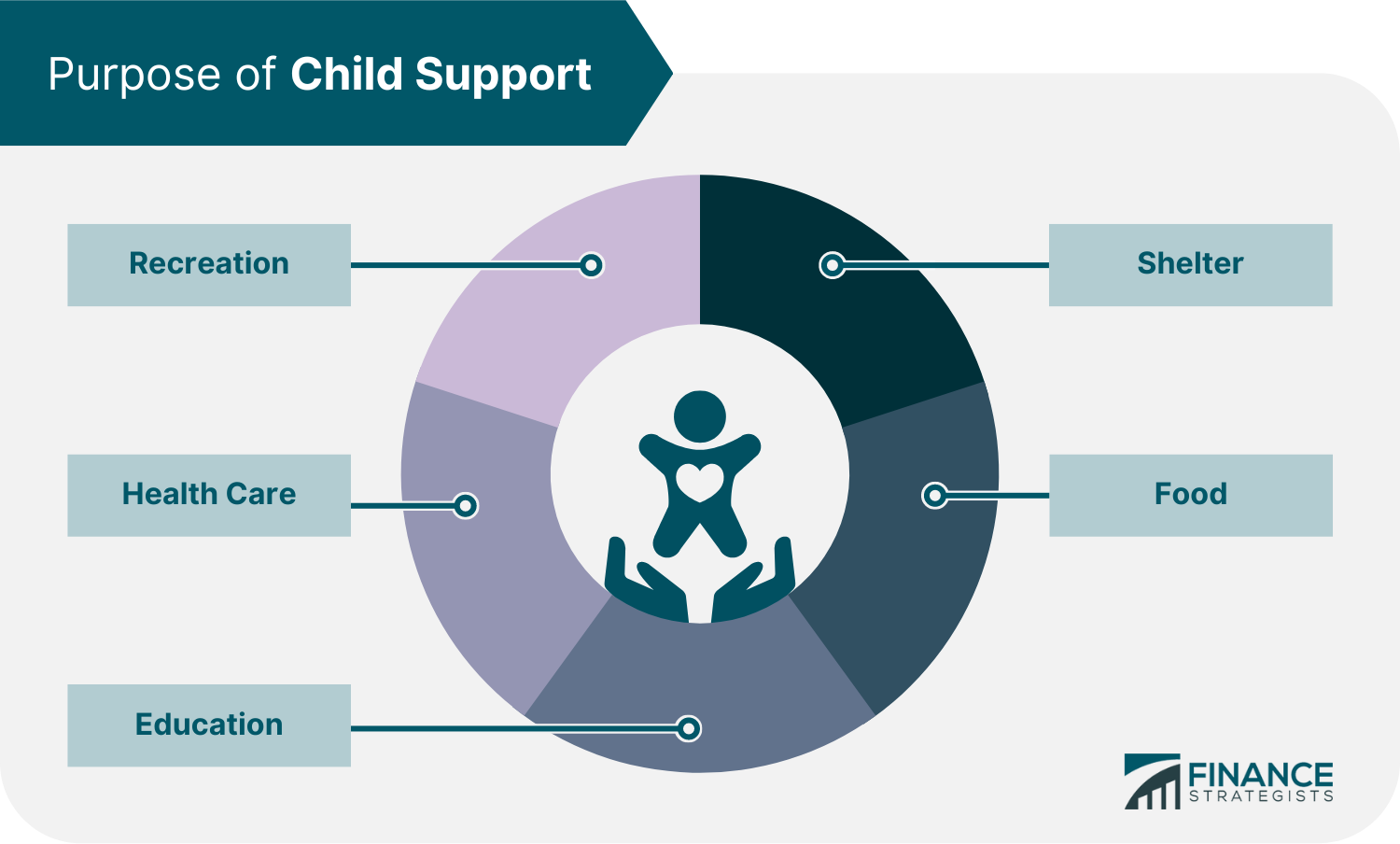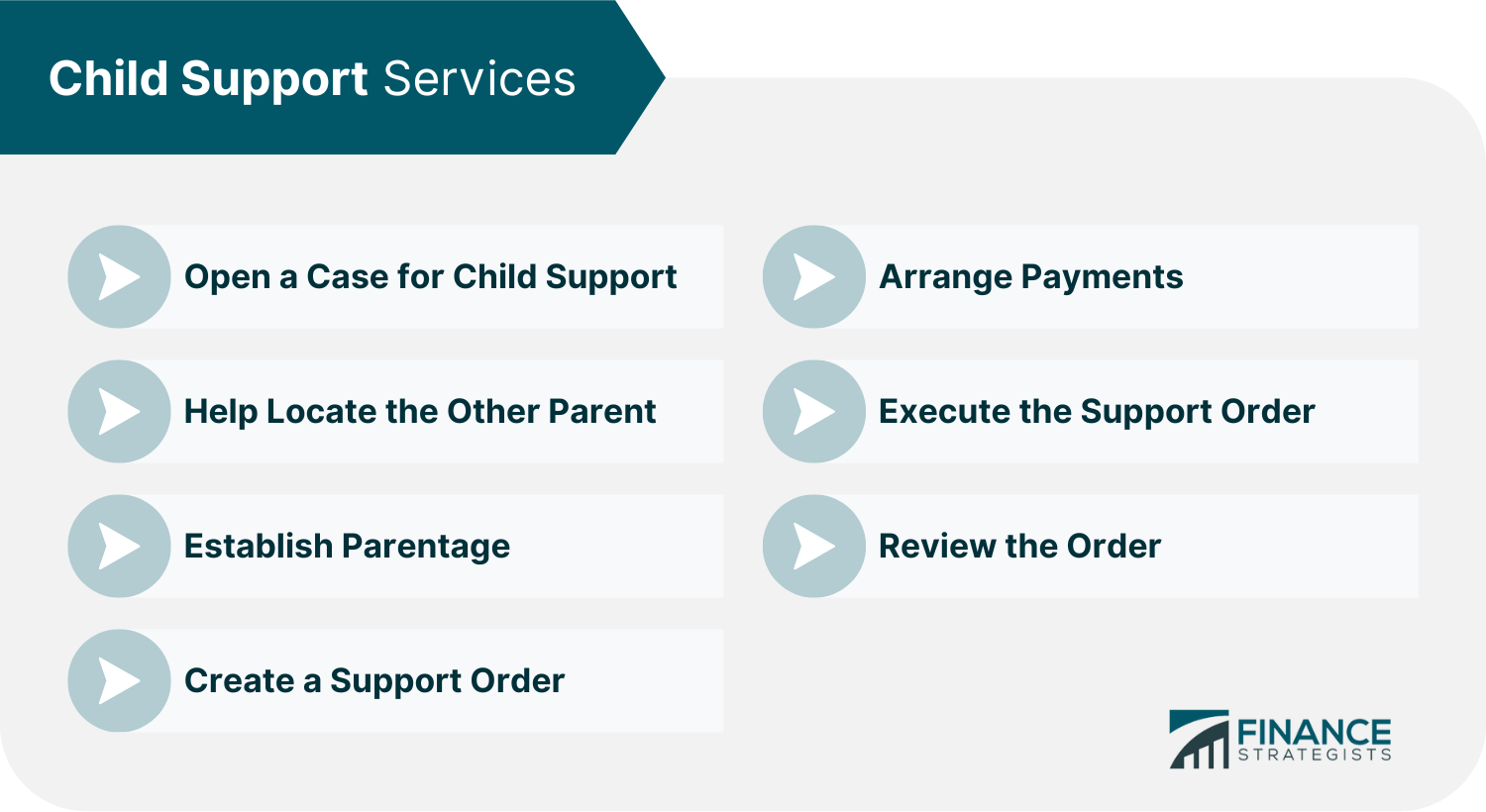Child support is a legal obligation that mandates one parent to financially provide for the needs of their child or children after divorce or separation. Food, housing, transportation, clothes, and standard school fees are the common expenses included in child support. The noncustodial parent usually pays child support. The court decides how much child support to pay based on factors such as the parent's income and custody arrangement. Parents are reminded of this legal obligation to pay child support. They are still responsible for their children even if they do not live together. Child support guarantees that both parents provide their children with the best possible financial assistance regardless of their relationship. Child support payments are to be spent on the care of the children. It is not to be used for the custodial parent's expenses. This arrangement ensures that both parents pay their fair share of the costs of raising a child. Generally, child support is often intended to maintain a child's quality of life and guarantee that all of their essential needs are met. The funds can be used to cover such expenses as: The noncustodial parent helps out with the costs that come with child care. The amount of support is based on many factors, such as each parent's income and custody arrangement. The process starts in two ways: when you apply for child support services or when another public assistance program sends a referral to your local child support office. Your local child support office will work to find the other parent. Afterwhich, parentage is confirmed, the order is set, and payment is collected from the parent who owed support. You can find an overview of the child support services published by the Office of Child Support Enforcement. Contact the child support office in your area to learn more about the process related to your case because each state has different laws. Every state has a child support formula, and the courts utilize those formulas to decide how much child support needs to be paid in each case. You can estimate how much child support you would owe using free internet calculators from different states. The parent's income is the most important factor in calculating child support. Some states evaluate both parents' income, while others solely consider the noncustodial parent's income. Another crucial aspect in most jurisdictions is the time each parent spends with the children. When computing the amount, the court considers the commissions, bonuses, social security benefits, and annuities a parent receives. The deductions such as health and work-related child care are also considered. The federal government has enacted legislation mandating the development of child support formulas by the states. Each state approaches child support legislation differently. Each state will abide by the formula and will not modify it unless a party has an exceptional circumstance, many other children, or other special cases. The guidelines for child support will cover three main aspects: Although the states issue multiple guidelines, there are three main approaches to calculating child support. Take the following steps to process child support claims: Step 1: Contact the Nearest Child Support Agency Each state has a designated agency that caters to child support processing. Contact your state support agency to facilitate the process of getting child support. Step 2: Prepare Documents Information about the noncustodial parent, like their name, address, and social security number, can assist the office in finding the parent, proving paternity, and imposing a child support order. Step 3: File an Application After you have located the right agency, you will need to fill out and submit an application. Apply together with the other basic information required. Child support is a legal obligation requiring one parent to help pay for their child's or children's needs after a divorce. It is designed to cover the costs of raising a child, like food, housing, transportation, clothes, and regular school fees. Every state has child support offices to help people get the money they are owed. Each state's laws and calculations for child support are different but usually based on parents' gross incomes. A financial advisor can assist you in developing a financial strategy to address your children's needs.What Is Child Support?
Purpose of Child Support

How Does Child Support Work?
How Is Child Support Calculated?
This model can take the form of a flat percentage, varying percentages, and a unique hybrid approach.How to Get Child Support

Final Thoughts
Child Support FAQs
The average child support payment in the United States is $430 per month. However, the amount of child support payments can vary greatly depending on each parent's income and custody arrangement.
The noncustodial parent is typically responsible for paying child support.
Child support is compulsory in the United States. All parents have a legal responsibility to support their children financially.
If a parent fails to pay child support, the court could hold their wages and tax refunds. Aside from that, the court could also take their property or take away their driver's license or professional license. The non-paying parent may also be held in contempt of court and fined or jailed.
Suppose you are a custodial parent and would like to request child support. In that case, you can file a petition with your local child support enforcement agency. The noncustodial parent will then be served with the petition and allowed to respond.
True Tamplin is a published author, public speaker, CEO of UpDigital, and founder of Finance Strategists.
True is a Certified Educator in Personal Finance (CEPF®), author of The Handy Financial Ratios Guide, a member of the Society for Advancing Business Editing and Writing, contributes to his financial education site, Finance Strategists, and has spoken to various financial communities such as the CFA Institute, as well as university students like his Alma mater, Biola University, where he received a bachelor of science in business and data analytics.
To learn more about True, visit his personal website or view his author profiles on Amazon, Nasdaq and Forbes.











